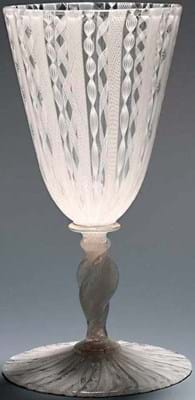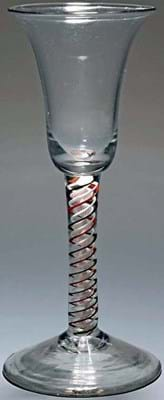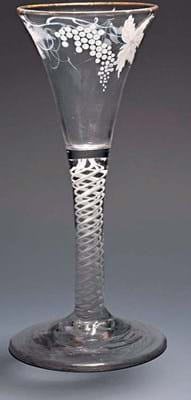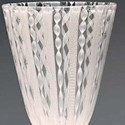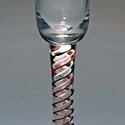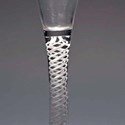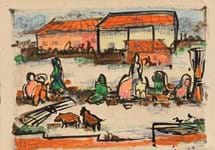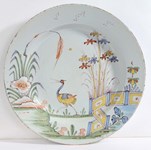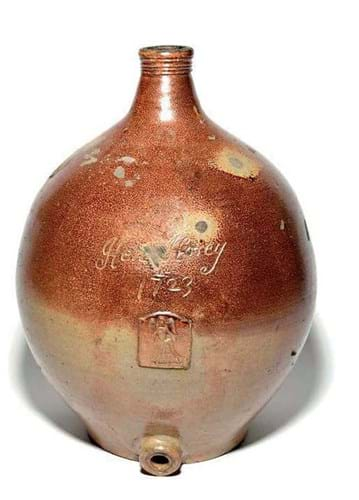
Items from one of the best-known dealers in the ceramics field - Jonathan Horne (1940-2010) - boosted Woolley & Wallis’ (26/20% buyer’s premium) latest dedicated ceramics auction.
It was one of two notable single-owner consignments offered on September 19, the other being an old collection formed by an early 20th century figure in the textile industry, Sir Henry Sutcliffe-Smith (1864-1938).
With just under 100 lots of glass, around 150 lots of pottery and nearly 250 lots of porcelain, there was a good balance of different material on offer in Salisbury.
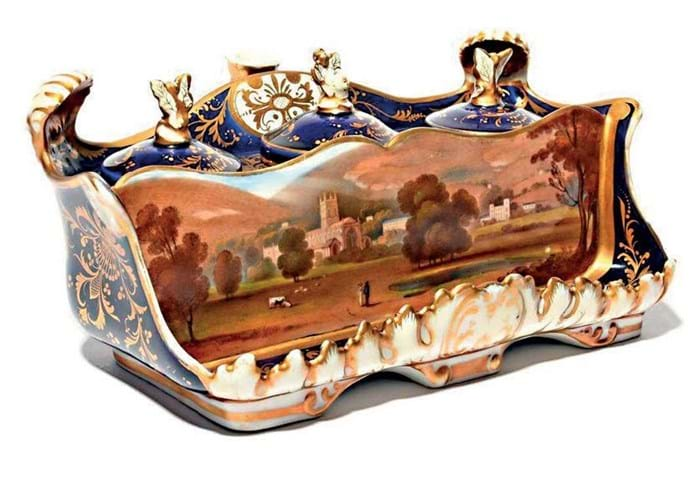
This 8½in (22cm) wide Chamberlain’s Worcester inkstand of c.1810-20 painted with a view of Malvern with figures was part of a small private collection comprising mostly Regency porcelain. It sold for £500 at Woolley & Wallis.
Overall, the sale generated an 83% take-up by volume. The pottery element proved particularly buoyant, providing a number of the top prices, and strong demand also emerged for the glass.
The pottery market is a more active sector generally, with more Americans still participating, but the single-owner collections also proved especially popular.
What was also notable, doubtless helping to increase demand, was the fact that overseas US and European bidders had come in person to view and attend the auction.
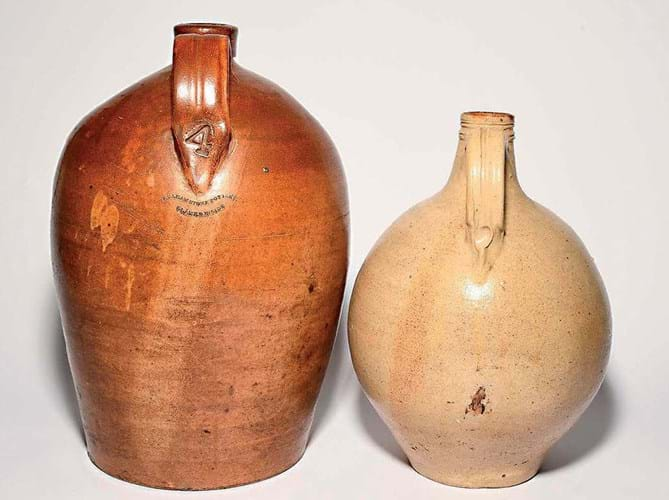
Another of the inscribed stoneware bottles in the Horne collection with an associated history was this four gallon 19th century Fulham stoneware example, impressed 335 George Dady Norwich and Fulham Stone Pottery Glazed Inside. Dady was landlord of The Walnut Tree Shades pub in Norwich and is listed as a wine and spirit merchant in directories of the 1850s. He died in a suspected suicide in 1859 at the age of 27, having been found drowned in a cistern after experiencing financial worries. His wife took over the pub but was killed the following year in a gunpowder explosion. Their two young children were rescued from the blast by a passing sailor and were cared for by their grandparents before being transferred to a London orphanage in 1865. Offered together at Woolley & Wallis with a smaller stoneware flagon, the bottle realised £1300 against a £150-250 guide.
Well known dealer and scholar
As W&W specialist Clare Durham noted after the sale, “any private collection adds value but a known name is important”.
And Horne was very well known, both in the trade as a dealer and as an author and scholar in the field of early ceramics.
An early interest in archaeology working for the Kent archaeological rescue unit grew into a fascination with post-medieval material and the foundation of the Society of Post-Medieval Archaeology.
This was reflected in the 45 lots from his collection consigned by his family that spanned delftware vessels, tiles and examples of stonewares and pottery from the medieval to 19th century eras.
It also came with benefit of estimates pitched to sell. (Relaxed vendors is a factor that Durham also notes as being generally important across this field.)
Among the most keenly contested items in the Horne property was a group of inscribed stoneware serving bottles.
The earliest was a massive 17¾in (45cm) high flagon with a tap aperture inscribed Hen Hosey 1723 and a plaque applied with an angel.
When first catalogued it was thought that the inscription might refer to a London publican, there being records of a Henry Hosey of Aldgate.
However, further information discovered by Durham after the catalogue was published revealed that a Hosey family were proprietors of the Angel Inn in Colnbrook, Buckinghamshire, where a John Hosey was recorded in the mid 17th century, a will for a Samuel Hosey innkeeper is dated 1714 and Henry Hosey is recorded in a sale to Richard Bullock dated 1733.
This extra information, tying it to a specific inn, was doubtless instrumental in pushing the price to £7000, far in excess of its £400-600 guide, with the hammer falling to an American bidder (although, as the final flagon in the group, bidders may have been spurred on by it being their last purchasing opportunity).
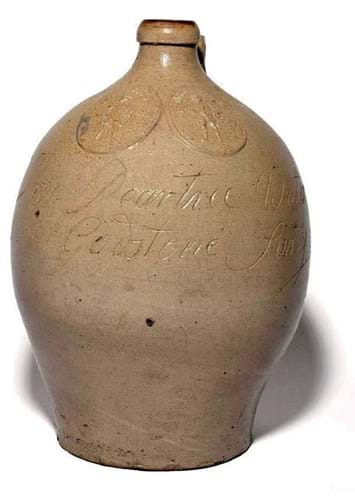
Two 18th century stoneware bottles for Peartree Water produced as a cure for gout were offered. This better-preserved example sold for £3500 at Woolley & Wallis.
Two large 14/15in (36/38cm) high mid-18th century stoneware bottles would also have contained Peartree Water.
Mr Bonwick, an enterprising landlord from Godstone in Surrey who suffered from gout, sank a new well on his land so he had less of a journey to walk for water. Cured of his gout and attributing his new-found health to the water in the well, Bonwick began to use it to brew his beer and also to sell to fellow sufferers as Peartree Water.
Each bottle had two plaques, one depicting a man on crutches crying Oh the Gout!, the other a healthy man titled Drink and be well, and they were both incised Iron Peartree Water / near Godstone, Surry. One realised £3500; the other, lacking its handle, made £1300.
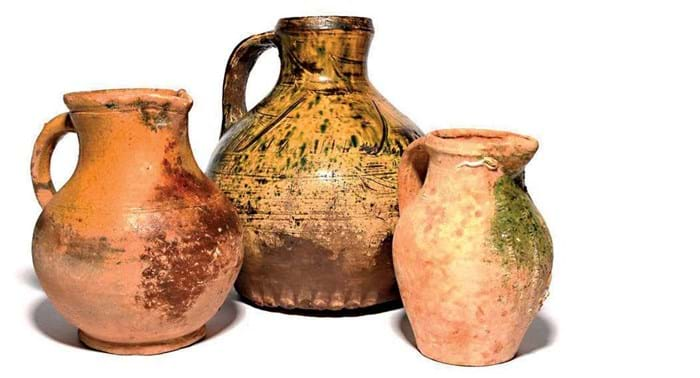
Leading the early pottery from the Jonathan Horne collection at Woolley & Wallis was this mediaeval jug with a note indicating it was found in Red Cross Street, London. Offered with two other bottles, it sold for £8000.
The most expensive of all the lots in the Horne property was the earliest. A large 14th century medieval jug standing 11½in (29cm) high with a greenish yellow glaze and traces of incised decoration bore a paper note stating that it was found in Red Cross Street, London, 18ft below the surface.
It was offered together with two smaller specimens, one post medieval in date. They were not in the best condition but, nonetheless, bidding sailed past the estimate of £800-1200 to reach £8000.
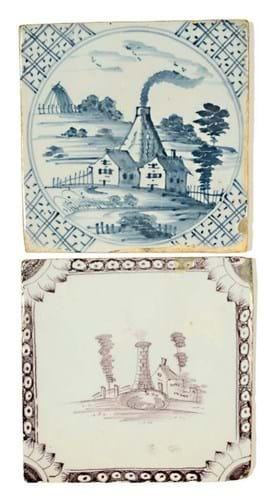
Among the large selection of tiles from the Horne collection at Woolley & Wallis were these two 5in (13cm) square examples, one London c.1760-90, the other Bristol, both painted with scenes of kilns. They featured in Horne’s book English Tin-Glazed Tiles and realised £950 against a £150-250 estimate.
Most of the tiles featured in the collection were delftware from London or Liverpool - some featured in Horne’s book English Tin Glazed Tiles.
While this provided opportunities for bidders to make some affordable purchases, one or two lots were taken to higher levels: such as a 17in (43cm) later framed three tile panel dated to c.1720-30, painted with gnarled trees before ruined buildings, which realised £1300 or two tiles decorated with kilns at £920.
Royal approvals

Delft charger decorated with double portrait of William and Mary sold from the collection of Sir Henry Sutcliffe- Smith at £3500 at Woolley & Wallis.
The half-a-dozen delftware royal portrait chargers in the 10-lot consignment offered by descent of pottery from the collection of Sir Henry Sutcliffe-Smith all found buyers.
The most expensive at £5000 was a 14in (35cm) diameter example painted with a full-length portrait of William III and inscribed WR3 that was pictured in ATG No 2607.
It was followed at £3500 apiece by a 13½in (34cm) diameter blue dash charger with a full-length portrait of Queen Anne inscribed AR and a smaller, 8½in (21cm) diameter plate painted in blue and yellow with a double half-length portrait of William and Mary inscribed W M R between the figures
The property also included three Toby jugs. One of these, a creamware Step or Twyford version of c.1780-90 showing the toper seated with a jug, a bowl and a clay pipe between his teeth (with some restoration to the back of the head and hat) realised £2800, four times the estimate.
This was by far the most expensive of all the Toby jugs offered in this sale but Durham noted that Tobies had picked up after the last sale and all the examples offered here found buyers.
The most expensive piece in the English porcelain section of the sale was a Chelsea model of a leveret of c.1755 based on a Meissen Kändler model. The small 3¾in (9.5cm) high crouching animal on a floral applied rocky base, which had some chips to the flowers and a small amount of restoration, went for £7000 against a £1500-2000 estimate.
The auctioneers were hoping that a rare Minton’s porcelain teapot of c.1876 modelled as a robin designed by William Goode and thought to have been commissioned from him by Alexandra of Denmark for her husband Edward VII would be one of the sale’s best sellers, but the £10,000-12,000 estimate proved too punchy and it was left unsold.
Lower down the scale in the three-figure range, an 18-lot private Hampshire collection of mostly Regency porcelain (Worcester, Spode and Coalport) that was modestly estimated all found buyers.
Among the Continental porcelain the catalogue cover lot, a pair of Meissen greyhounds shown with forepaws lifted on the ground supported on tree stumps, realised an upper-estimate £8000. The models were designed c.1745-50 by Johann Joachim Kändler for the use as table decorations in Augustus the Strong’s hunting lodge.
Boosted by interest from Continental bidders and a good turnout of room bidders on sale day, the opening glass section performed well in Woolley & Wallis’ sale.
The first 33 lots came from a private London collection and produced most of the highest prices. It offered a good mix of different collecting categories of early English and Continental drinking glasses: balusters; Jacobite glasses; colour twists; Beilby decorated glasses; Dutch engraved examples and a selection of façon de Venise pieces. Pictured here are three of the best-selling examples.



